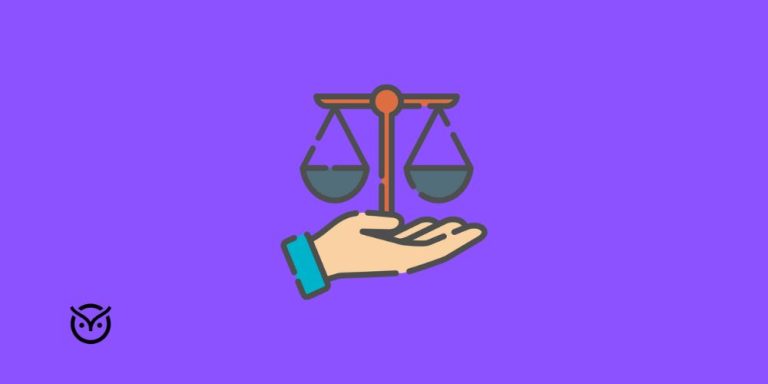Ensuring Legal Defensibility in AI Hiring Tools

TL;DR
- Many teams assume AI tools handle all legal updates. They don’t.
- You need clear audit trails and transparent scoring to stay safe.
- Ask vendors how they track new hiring laws and test updates.
- Look for bias testing, documentation, and results that are easy to explain.
- Your company still shares responsibility even if the tool makes the decision.
AI has become a regular part of early screening, coding tests, and skill evaluations. Yet the rise of regulations has made ensuring legal defensibility in AI hiring tools a genuine concern for companies that want to hire fairly without putting themselves at risk. New laws in the United States and the European Union are moving quickly, and teams often assume that platforms automatically handle every change. That assumption creates a silent compliance risk.
The good news is that legal defensibility is possible with the proper checks. When your platform shows how it evaluates candidates, updates its models when laws shift, and provides clear documentation, you gain protection and clarity. This blog will walk you through what to look for, how tools stay compliant, and how you can avoid gaps in your process.
Do AI Hiring Tools Keep Up With Changing Laws?
A lot of teams ask one specific thing. Do tools like TestGorilla or Codility keep up with all the new hiring laws? The honest answer is yes in many cases, but not always at the speed companies expect. Vendors differ in how quickly they adapt, and laws around automated decision-making can change several times a year.
For example, New York City’s Local Law 144 requires bias audits for automated employment decision tools. A 2024 field study of 391 NYC employers found that only 18 had posted an audit of bias needed report, and just 13 had published the candidate transparency notice on their websites, showing how slow real-world adoption can be
The European Union’s AI Act has also introduced requirements for high-risk hiring systems, focusing on transparency, candidate rights, and record-keeping. The Act was approved in 2024 and will start applying in phases from 2025 onward.
Most vendors try to keep up, but businesses should still verify. Some platforms update bias testing quarterly, while others only revisit models once or twice a year. The speed and depth of updates vary, which is why relying purely on vendor claims can create a compliance gap in AI-powered assessments if you don’t check.
How Platforms Maintain Compliance
Platforms stay compliant by mixing monitoring, auditing, and technical controls. Strong vendors keep legal teams or external consultants who track hiring rules across regions. They maintain clear documentation on what data they use, how they test assessments, and how often their models are checked for skewed outcomes.
Many of today’s AI talent assessment tools run fairness evaluations before releasing new scoring models. Some even allow employers to see breakdowns by gender or ethnicity where legally permitted. A survey found that 64 percent of organizations using AI to support HR-related activities use it specifically for recruiting, interviewing, and hiring, which is pushing vendors to build more precise bias-audit documentation and reporting into their products.
Other platforms build model explainability into the system so your team can defend a decision if questioned. Automated logs, version histories, and item-level scoring make it easier for HR to prove that candidates were judged on job-related criteria. Codility, for example, updates its coding task bank throughout the year to remove leaked questions and maintain test validity. TestGorilla publishes release notes that show when assessments are refreshed or rebuilt.
Still, even the best tools cannot remove all responsibility from the employer. Vendors help you stay compliant, but they cannot guarantee compliance unless your own processes align with the law requirements in your region.
What Legal Defensibility Means in Practice
Legal defensibility means you can show that your hiring decisions are fair, job-related, and based on consistent criteria. It is not just about following rules. It’s about having proof.
A defensible system includes:
- Clear explanations of how the tool evaluates candidates
- Records showing when algorithms were last updated
- Evidence of bias testing and validation
- Job-related scoring is tied to the skills you actually need
- Logs that show no one altered the results manually
This matters because agencies now ask for real documentation when reviewing cases. That means even if your platform handles scoring, you must be able to explain how choices were made. Transparent tools also help you evaluate matches more confidently. This becomes even more important when you are using tools that support AI candidate matching, since those models depend on training data and matching rules that regulators expect companies to understand.
Red Flags in Non-Compliant AI Hiring Tools
Non-compliant tools usually show clear warning signs once you know what to look for. The biggest one is a lack of transparency. If a platform cannot explain how it scores candidates or what data its models rely on, you lose the ability to defend your hiring decisions.
Another red flag is slow or unclear updates. If the vendor cannot answer a simple question, such as whether their assessments were refreshed after New York City’s Local Law 144 went into effect, that should raise concerns. This ties back to the common question many teams ask internally. Do tools like TestGorilla or Codility keep up with all the new hiring laws? Some do, but the ones that don’t are usually the ones that fail to publish audit reports, update logs, or model documentation.
You may also notice gaps in how the tool handles explanations. If it produces scores but gives no reasoning behind those scores, you risk having decisions challenged without the proof to back them. Non-compliant tools also avoid third-party audits or only perform them irregularly. Reputable platforms conduct regular bias checks and share the results openly.
A final red flag is when a vendor claims their tool “automatically ensures compliance.” No tool can do that alone. Your hiring process, job descriptions, and assessment choices matter just as much as the software.
How Companies Can Stay Legally Protected
Staying legally protected starts with shared responsibility. Your vendor should offer compliant features, but your team must still verify that they fit your legal environment.
Begin with documentation. Ask vendors for model transparency reports, audit summaries, and release notes that show how often assessments are updated. Regulators expect companies to know how their tools work, not rely on black-box decisions.
Next, review your own process. Make sure assessments test job-relevant skills and maintain consistent scoring across all candidates. Keep clear logs of who applied, what tests they took, and how they performed. These records help in case of any review or complaint.
Another strong step is internal testing. Before using a tool widely, run a small pilot with different groups to check for unexpected scoring patterns. This helps you spot bias and address issues before they become a risk.
Finally, set up a regular review schedule. Laws change every year, especially with new rules in New York, Illinois, California, and the European Union. Your tools may update, but your policies must update with them. When both sides move together, your hiring process becomes safer, more transparent, and easier to defend.
Conclusion
AI hiring tools can improve fairness and speed, but only when they are used with care. Keeping up with new rules, checking vendor updates, and maintaining clear documentation all help you reduce risk and build trust in your process. When your platform is transparent and your internal practices stay consistent, you create a hiring system that is stronger, safer, and easier to defend.
FAQs
Most reputable vendors do update for major regulations, but the pace and depth of updates differ by platform. Some refresh their assessment models several times a year, while others release changes slowly. Always ask for update logs instead of assuming the tool stays current on its own.
Look for transparency reports, audit summaries, explainable scoring, and documentation about how the tool evaluates candidates. If a vendor cannot answer basic questions about its data or model updates, that is a sign you should investigate further.
AI hiring tools are allowed in most regions, but some areas require bias audits, disclosure notices, or strict transparency rules. Make sure your local laws match how the platform operates so you remain protected.






